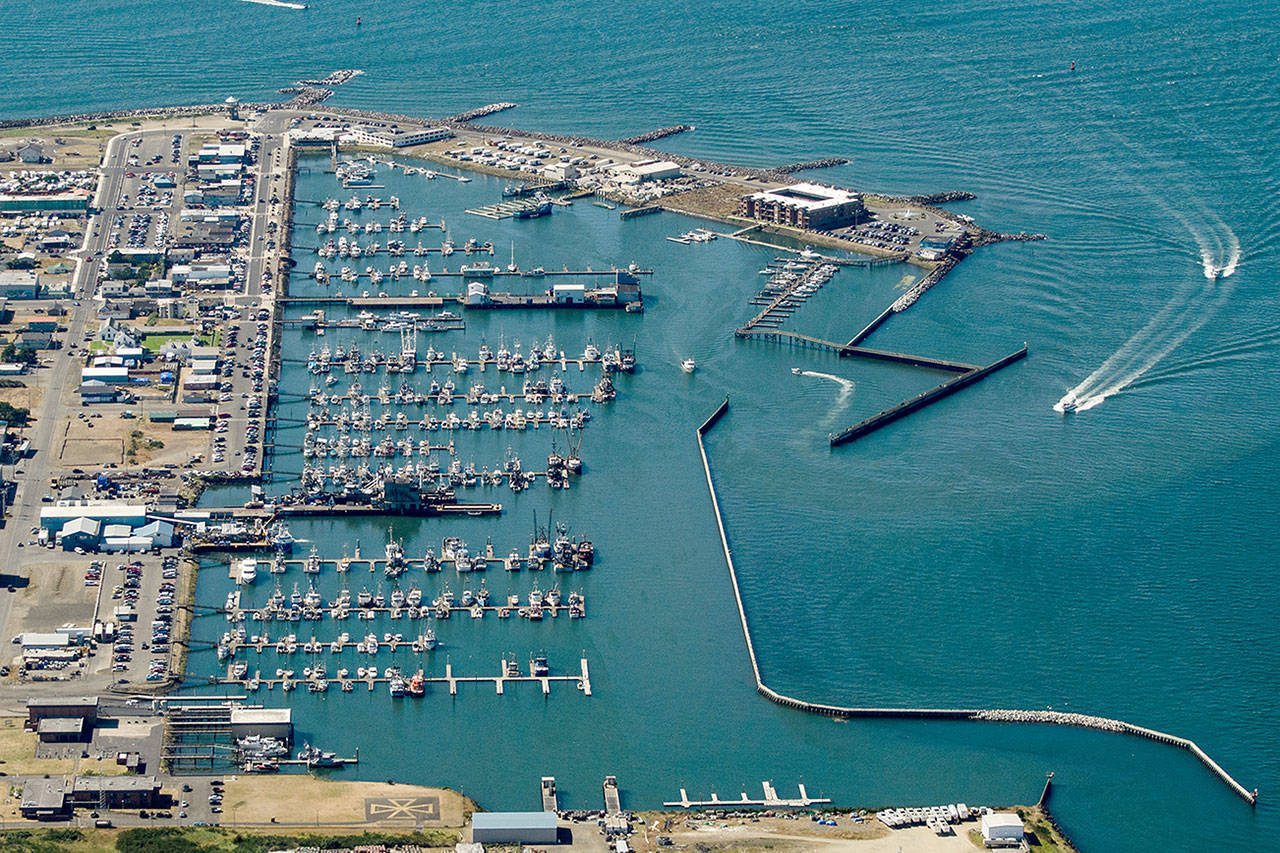Westport Marina ranked 11th in the nation for commercial seafood landings in 2017, according to statistics compiled by the National Oceanic and Atmospheric Administration.
More than 150 million pounds of crab, salmon, hake and other seafood landed at the marina’s docks in 2017. That’s up from 108 million pounds in 2016, when Westport ranked 10th nationally. Westport also ranked 13th in the nation in value with just over $64 million of product landed by the more than 250 commercial fishing vessels that use the marina.
“We are incredibly proud of the hundreds of commercial fishermen that utilize and depend on the Marina’sfacilities and services for their livelihood,” said Westport Marina Business Manager Molly Bold. “Projects planned for 2019 will continue to improve the infrastructure our fishing industry needs to thrive.”
Dutch Harbor Alaska had the highest volume in the nation in 2017, the 21st year in a row it’s held that distinction, with 769 million pounds landed.
Across the nation, American fishermen landed 9.9 billion pounds of fish and shellfish in 2017, while the U.S. imported 5.9 billion pounds of seafood, up 1.6 percent, according to the annual Fisheries of the United States report.
“This report exemplifies the vital economic benefits provided by commercial and recreational fisheries to American communities nationwide,” said Secretary of Commerce Wilbur Ross. “Every year, farmed and wild fisheries across the United States deliver food to our tables while safeguarding thousands of American jobs.”
The landed 9.9 billion pounds of fish and shellfish in 2017 represents an increase of 344 million pounds from the year before. The value of the landings also increased to $5.4 billion, up $110 million from 2016.
Overall, the highest value U.S. commercial species were salmon ($688 million), crabs ($610 million), lobsters ($594 million), shrimp ($531 million), scallops ($512 million), and Alaska pollock ($413 million). By volume, the nation’s largest commercial fishery remains Alaska pollock, which had near record landings of 3.4 billion pounds, up 1 percent from 2016.
The report notes that the average American ate 16 pounds of fish and shellfish in 2017, up 1.1 pounds from the year before. U.S. dietary guidelines recommend eating at least 8 ounces of seafood per week.
The U.S. aquaculture industry produced $1.5 billion in 2016 — the most recent year aquaculture data is available — an increase from $1.4 billion in 2015. Aquaculture represented approximately 21 percent of the value of the nation’s total seafood production in 2016. The top value domestic farmed marine species were oysters, clams, and salmon.
Shrimp, salmon, and tuna continue to top the list of imports for 2017, with a total value of all seafood imports of $21.5 billion (up 10.4 percent).


